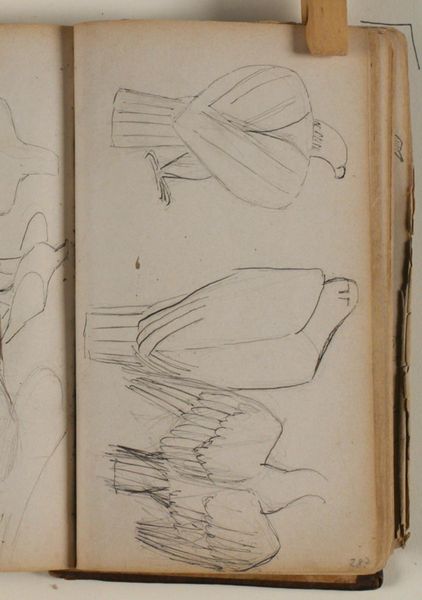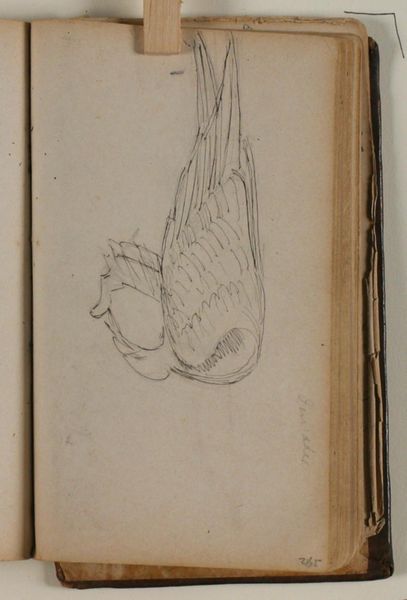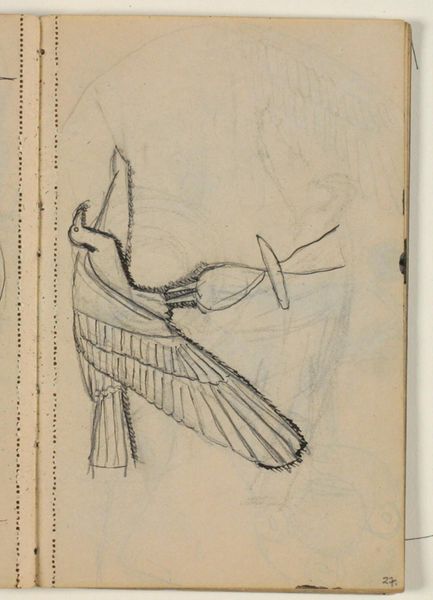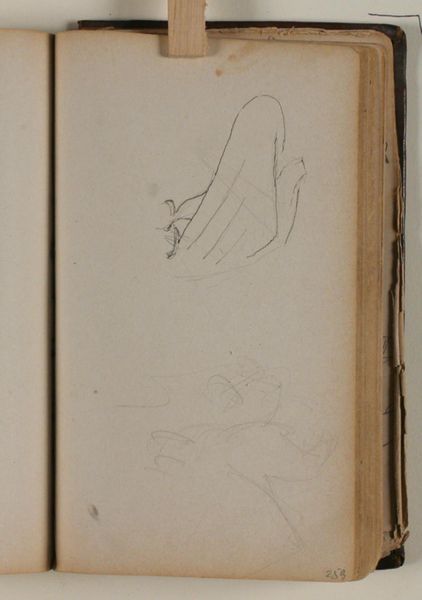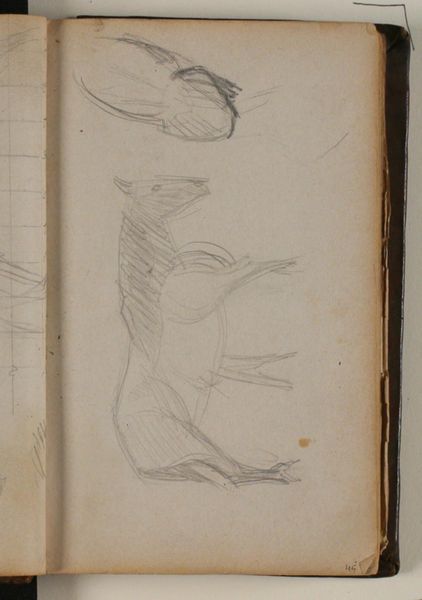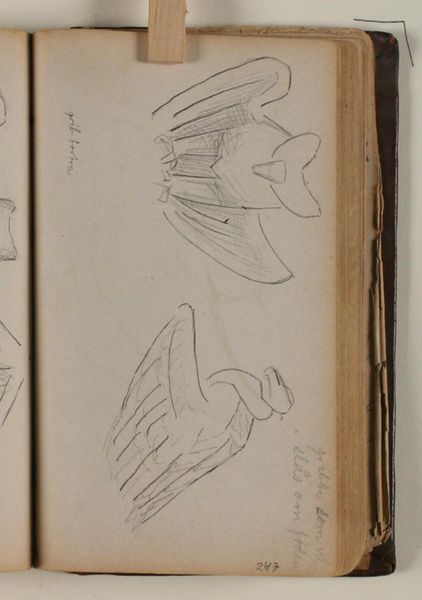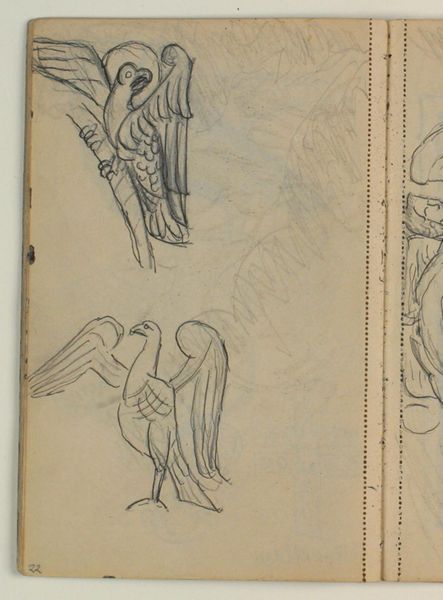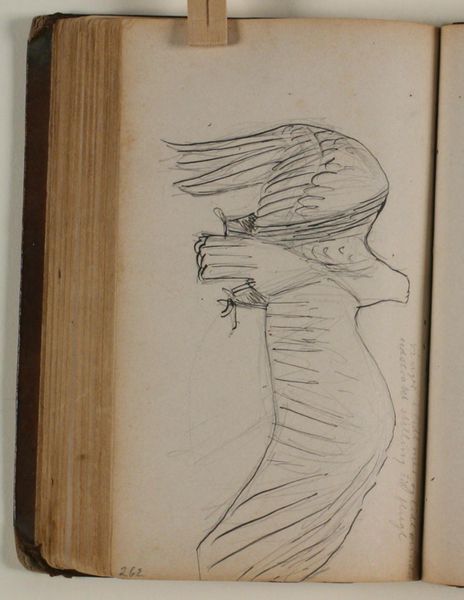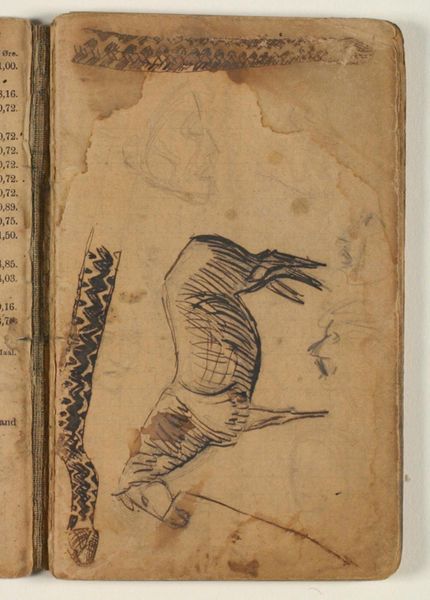
Dimensions: 161 mm (height) x 96 mm (width) (bladmaal)
Curator: The piece before us, created between 1906 and 1910 by Niels Larsen Stevns, is entitled "Studies of Two Bird Wings." Rendered with pencil on paper, it's a fascinating glimpse into an artist's process, held here at the SMK. What springs to mind for you? Editor: Fleeting. That's the word that comes. Quick sketches, really. A study in potential energy, of something about to take flight, or maybe has just landed. They capture such a moment of transition. Curator: I agree, there's a definite sense of capturing movement, but also, the meticulous rendering of the feathers speaks of scientific observation too. It is the study of organic structures and their aerodynamic capability. Flight, of course, appears in cultural symbolism in a lot of guises – the desire to be free of earthly constraints, the capacity to ascend to a higher spiritual plane. The wings as such do present possibilities. Editor: Precisely. But the roughness of the drawing pulls me back to earth. The sketch feels vulnerable, incomplete. It's more a raw desire to understand. He wasn’t trying to present a majestic symbol; rather, it’s the investigation into what enables such symbols, what the structure is, a very primal symbol, I'd say. Curator: I hadn't considered the raw investigative aspect to that degree but it certainly resonates! It's tempting to see impressionistic tendencies, in the use of line and the focus on light catching on the feathers' surface but his mark making gives an organic precision beyond mere optical sensations. Editor: Do you feel the two different views of the wings—one fully splayed, one more tightly furled—offer contrasting symbolism? I feel a very defined openness against potentiality. Curator: Possibly. The closed wing hints at containment, while the other implies expansiveness, but the shared theme—organic growth—suggests a unified visual motif. There's this amazing thing in folk belief of people being shapeshifters - werewolves. It isn't well known but there's equally potent mythology around being a werebird too. Think the Egyptian Gods and Goddesses or, much darker, the Harpies of Greek legend. Shapeshifting and the ability to fly are quite entwined and these studies may well capture this yearning. Editor: Interesting, I feel that adds another layer, perhaps unconscious, to the meaning behind these wings. The transformative aspect you mentioned highlights the potential of what these symbols are more generally capable of conveying. Thank you. I will never see it in quite the same way now. Curator: Always a pleasure to share insights! These wings may belong to a lark, as indicated on the page. Consider their connection with dreams and possibilities of life beyond just the simple beauty. They've definitely inspired thought about our symbolic association of wings, flight, freedom, and inner potential.
Comments
No comments
Be the first to comment and join the conversation on the ultimate creative platform.
